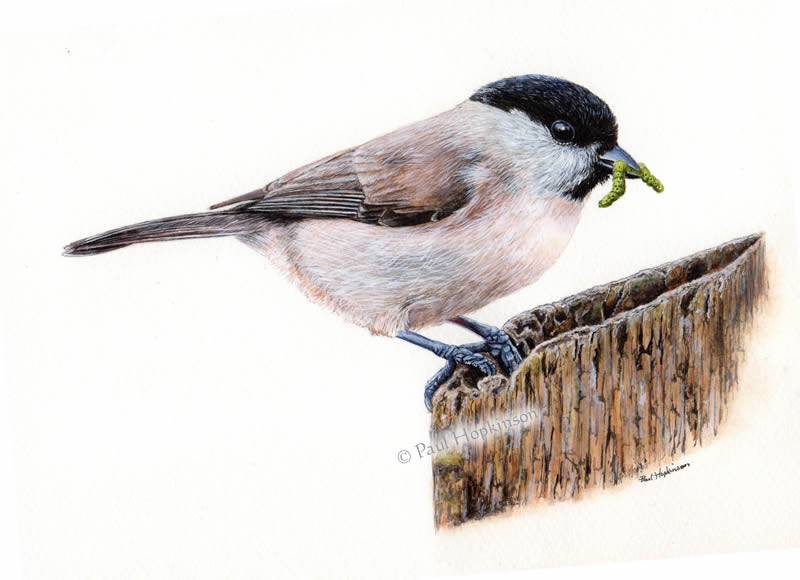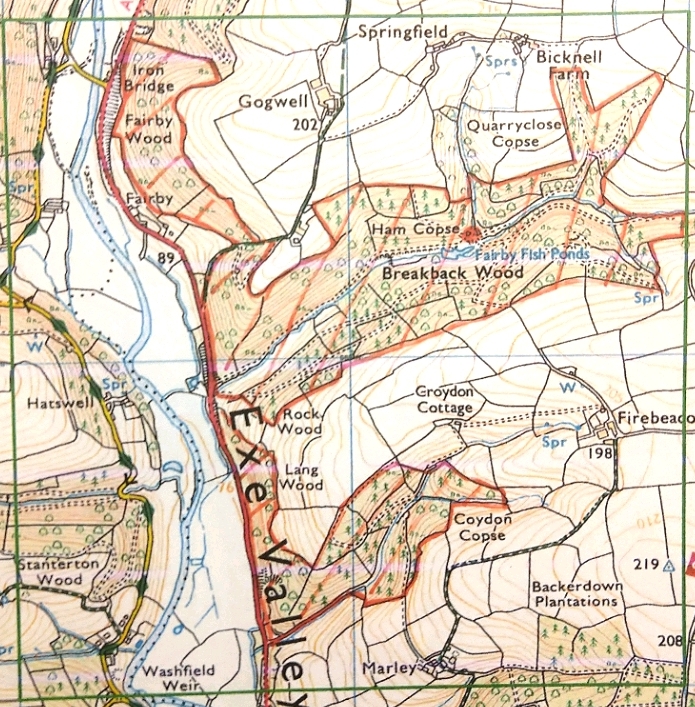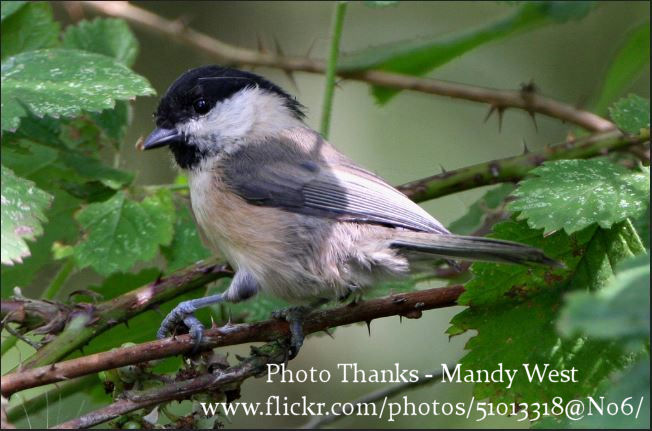Marsh Tits and Willow Tits

Six years ago I took a picture of a Marsh Tit at Tamar Lakes which I later painted. I had no idea that in 2019 I would be involved in a Marsh and Willow Tit conservation project. Or what that the subsequent, first ever tutorial that I wrote would lead to. I certainly had no idea just how many more tutorials I would write and publish!

Back in 2013 I used to incorporate some white acrylic into my paintings in order to create the white highlights I needed. I tended to use it much like watercolour paint. So I would thin it down and vary the thickness depending on the effect I wanted to achieve. These days I no longer use white acrylic or gouache in my paintings, preferring to stick with watercolours on their own. Actually, the PDF could be used with just opaque watercolour white instead. This would work equally well if the consistency was controlled.

A Dream come True
Back to the Marsh Tit tutorial, it was with great trepidation that I submitted the article to Leisure Painter magazine. Suffice to say, I was absolutely thrilled when they published it in their magazine. All my life, I had wanted to become a ‘published’ artist and be recognised for my work. This felt like a huge step in the right direction, and I set about writing a further tutorial……

At the time of writing the PDF, I was taking a lot of my own reference photos. Jo and I were visiting bird hides and I had taken to baiting a suitable spot with food. It was then a case of waiting for whatever came in. As you can see, the photo I took had the Marsh Tit with a seed in its beak. Artistic licence meant I was able to substitute a tasty caterpillar in the painting.
In the process of taking my own reference photos, I inadvertently captured a photo of a ringed Goldfinch. I spent several more hours in the garden taking Goldfinch photos. Eventually I had enough photos for us to work out the entire number on the ring. The bird had been ringed in Devon, and we were put in contact with the ringer. We have in fact remained friends ever since. And this is where we get on to the bit about Willow Tits which I know you have been waiting for!
National Willow Tit Survey
Yesterday we joined our friend to help with a National Willow Tit survey. The species is sadly the second fastest declining species in the UK after Turtle Doves. Visually, they look almost exactly the same as a Marsh Tit – but their call is significantly different. Indeed, the surveying was based on controlled playback of their various sounds in a designated area or tetrad as it is known. We had a full day of surveying, and now know the sounds Willow Tits may make rather well!! We have at least one more day of surveying to undertake in a few weeks time. Surveying at least twice ensures we hopefully haven’t missed any birds.

Yesterday, we observed 3 birds that could have been our target species. However, given the habitat, it was felt they were probably Marsh Tit. Unfortunately, with no call made, we cannot be certain. However, Willow Tit favour damp young woodland, and we were surveying in mature woodlands. These may well have held populations in the past, but they are unlikely to still be present. This indeed is what the experts believe the problem is. Surveys help to provide vital data and statistics for Marsh and Willow Tit conservation. This can then impact on environmental projects and habitat management plans in the future. With a bit of help, hopefully this little bird can be brought back from the brink in this country.
Thank you for reading this far. 








2 responses
You must be very busy with the birds now that spring is on the way…beautiful bird…
Thank you Susan, we will be busy soon. We think another month away and it all goes crazy! 🙂